Meet S. Korea’s guardians of the sea
On S. Korea’s homegrown Aegis destroyer and attack submarine, naval officers on readiness posture 24/7 amid escalating N. Korean threats
By Ji Da-gyumPublished : May 18, 2023 - 16:24
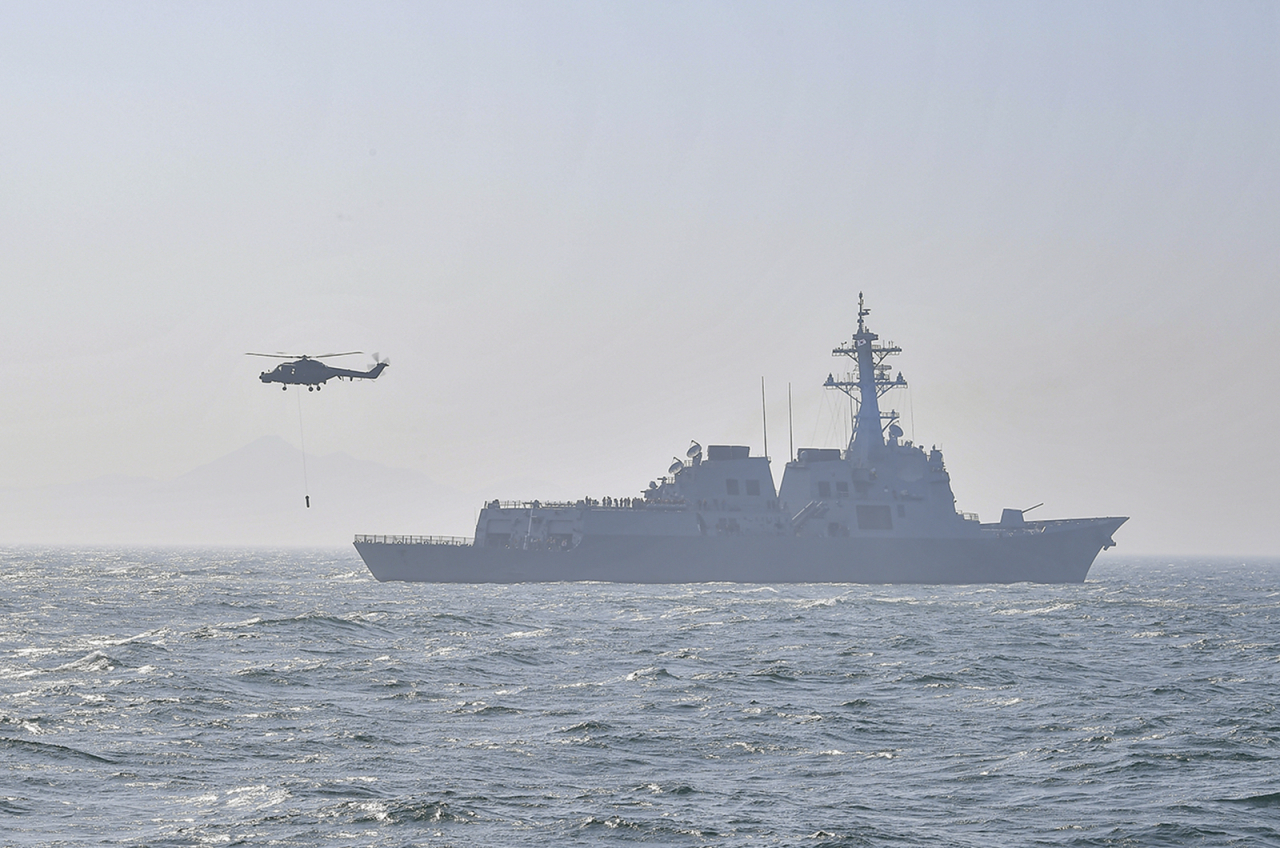
BUSAN/CHANGWON, South Gyeongsang Province — “All hands, man your battle stations!”
The combat control center of the South Korean Navy’s Sejong the Great Aegis destroyer in waters off the city of Busan sprung into life.
Upon receiving information that a North Korean submarine armed with submarine-launched ballistic missiles, or SLBMs, was operating in waters off the Korean Peninsula, crew members donned life vests and took up their stations as a simulated exercise began Tuesday.
But soon after, at the combat command center, a sense of calm permeated the air.
One of the Navy’s three operating Aegis destroyers, the Sejong the Great embarked on a mission to detect and track ballistic missiles fired from North Korea to defend South Korea during the ballistic missile defense exercise.
The 7,600-metric-ton Sejong the Great Aegis destroyer strategically established a concentrated surveillance area within the operational zone of North Korean ballistic missiles, initiating dedicated ballistic missile detection operations.
Shortly afterward, the Aegis destroyer successfully detected an unidentified object using its SPY-1D radar. It tracked the detected projectile and swiftly relayed the gathered data to the Korea Theater Missile Operation Cell at South Korea’s Air Force Operations Command, located within Osan Air Base in the city of Pyeongtaek, Gyeonggi Province. The KTMO-Cell serves as the command and control center responsible for round-the-clock supervision of anti-ballistic missile operations within the Korean Theatre of Operations.
Afterward, the Aegis destroyer meticulously analyzed the captured data, extracted crucial details -- such as the flight path, trajectory and distinctive characteristics of the detected object -- and promptly shared the information with relevant operational units.
The Sejong the Great Aegis destroyer is the country’s first Korean-developed vessel of its kind, standing as the cornerstone of the South Korean Navy's warfighting capabilities. The Navy is responsible for protecting approximately 320,000 square kilometers of water, which is 3.5 times the size of the Korean Peninsula.
The importance of Aegis destroyers is amplified by the advancements in North Korea’s nuclear and missile capabilities.
The destroyer is equipped with a SPY-1D multifunction radar system, and is able to detect airborne targets up to 1,000 kilometers away. The destroyer can simultaneously detect and track over 1,000 targets and strike around 20 concurrently with anti-surface, anti-ship, and anti-air weapons.
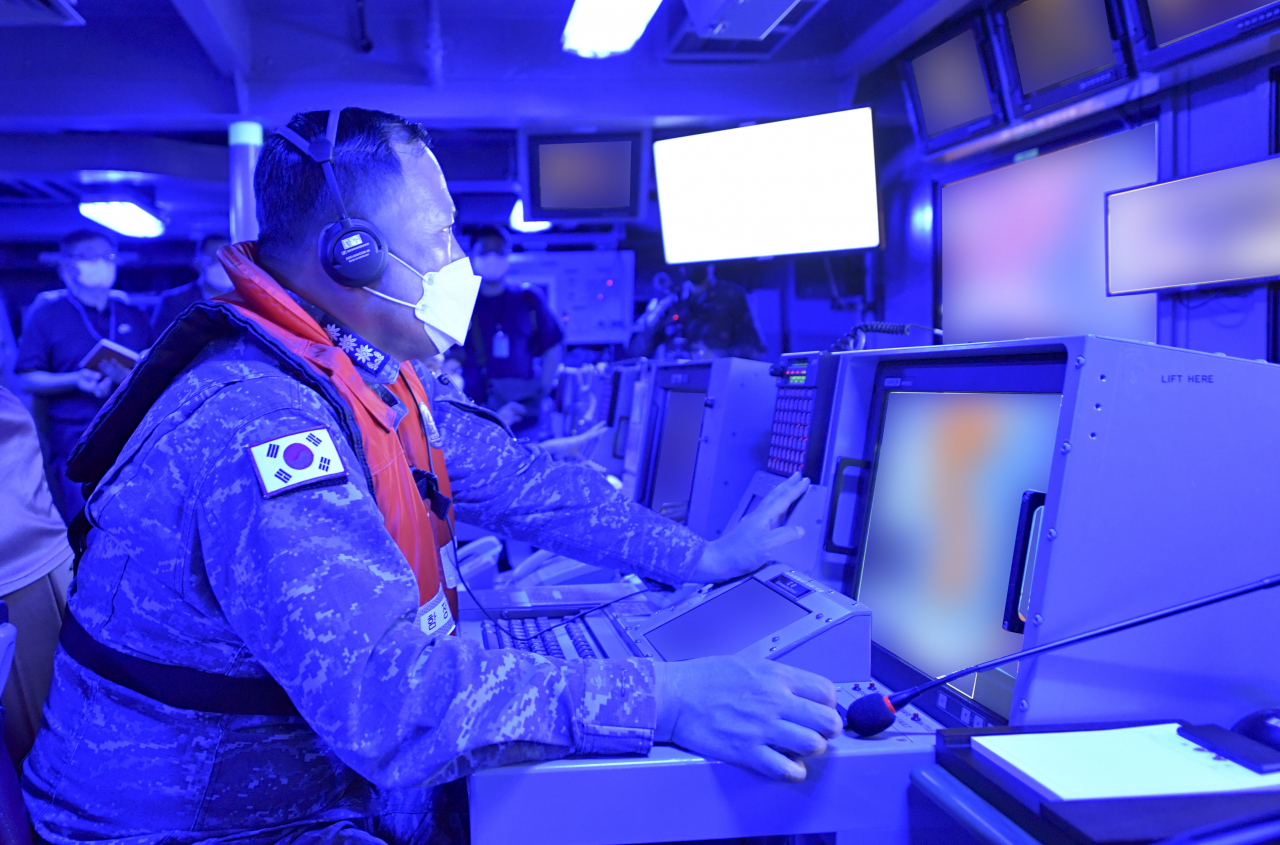
Ready for submarine warfare
After completing a missile tracking mission, the Aegis destroyer then embarked on an anti-submarine warfare exercise, engaging in a simulated scenario where an enemy submarine violated the inter-Korean maritime border and launched a torpedo attack.
It promptly issued orders to the nearby P-3 Orion maritime patrol aircraft upon detecting an unidentified submerged object. The P-3 Orion descended to an altitude of 100 meters or lower and deployed four active sonobuoys, which utilize transducers to emit acoustic signals and subsequently detect the returning echoes from objects underwater, and one marine location marker to aid in the search operation.
Acoustic operators on board the P-3 Orion analyzed the gathered information and successfully pinpointed the precise location of the underwater object.
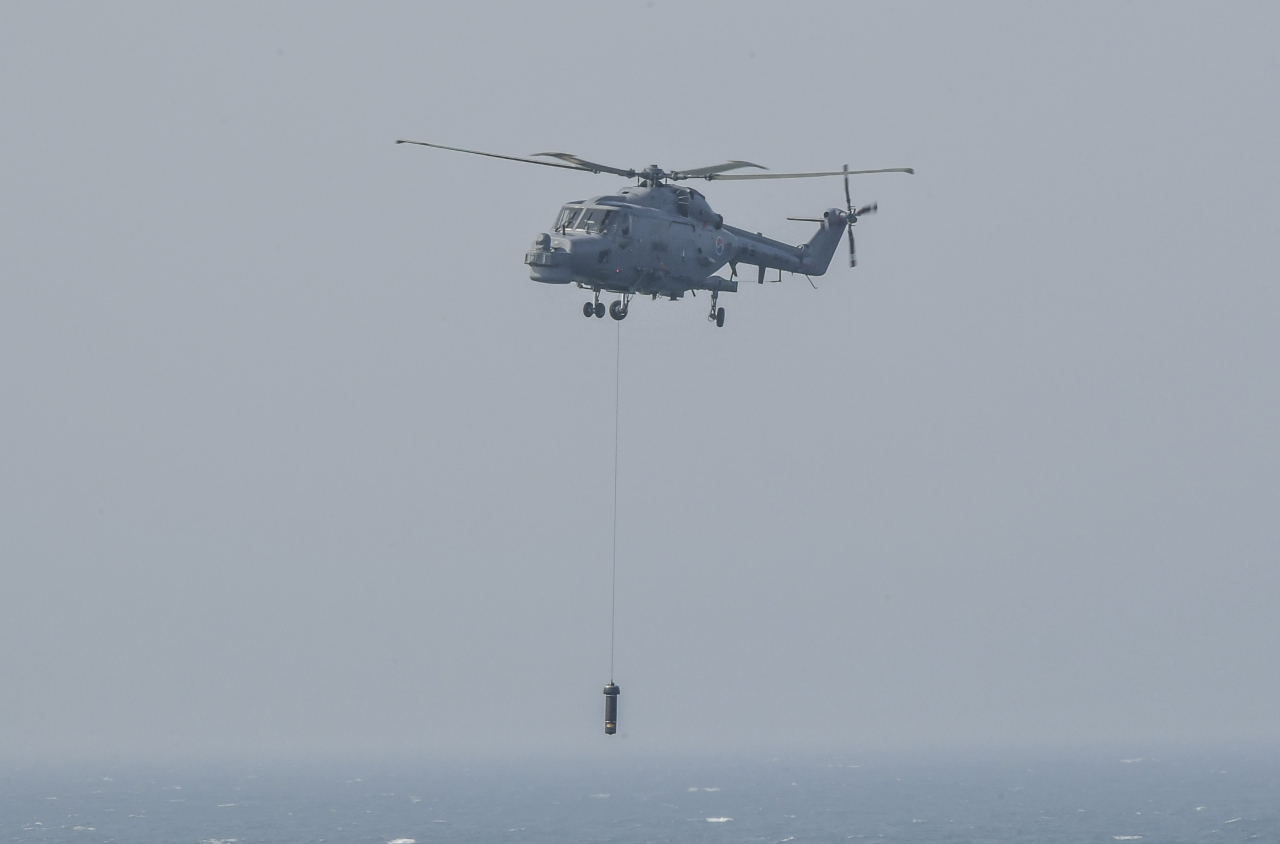
The Lynx multi-purpose military helicopter swiftly took off from the destroyer to search for the North Korean submarine. The Lynx helicopter, upon reaching the designated point, deployed a dipping sonar, which enabled the destroyer to identify the detected underwater noises as indicative of torpedo propulsion.
The destroyer promptly authorized the Lynx helicopter to engage the enemy submarine by firing the domestically-developed lightweight torpedo “Cheongsangeo.”
The destroyer also unleashed a precision-guided, light anti-submarine missile called “Hongsangeo.” With remarkable accuracy, the missile found its mark, resulting in the successful destruction of the virtual enemy submarine.
“Our Sejong the Great warship maintains the utmost level of combat readiness by engaging in rigorous training and education, simulating real-world scenarios to effectively prepare for a wide range of threats posed by the enemy,” said Capt. Kim Sung-phil, the commanding officer of the destroyer.
“We are steadfast in our commitment to respond resolutely and decisively to any provocation from the enemy, regardless of the timing, location, or under what circumstances it may occur.”
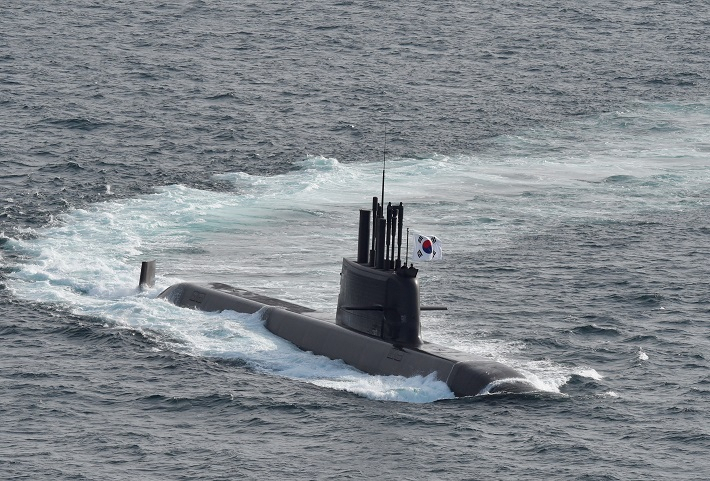
Attack submarines ready for combat
South Korea’s naval strength is further enhanced by the presence of the 3,000-ton Dosan Ahn Changho attack submarine, which stands as the country’s first domestically developed submarine.
This submarine plays a critical role in the South Korean naval forces’ ability to detect and engage North Korean submarines equipped with SLBMs.
The Dosan Ahn Changho submarine is capable of accurately targeting key locations in North Korea using its SLBMs, torpedoes and naval mines. The submarine is South Korea’s only submarine that can launch ballistic missiles, thus playing a vital role in the Navy’s strategic capability.
“The Dosan Ahn Changho submarine is a world-class submarine optimized for ocean operations and long-term missions,” Capt. Kim Hyung-gyun, the commanding officer of the Dosan Ahn Changho submarine, said. “It serves as the core pillar of a powerful maritime force and is a national strategic weapon system capable of countering omnidirectional threats.”
The headquarters of the South Korean Navy’s Submarine Force Command is strategically located in Jinhae Bay.
The entrance signboard proudly displays the unit motto, “One shot! One hit! One sink!” The unit's motto symbolizes its unwavering determination and exceptional precision with which they carry out their missions.
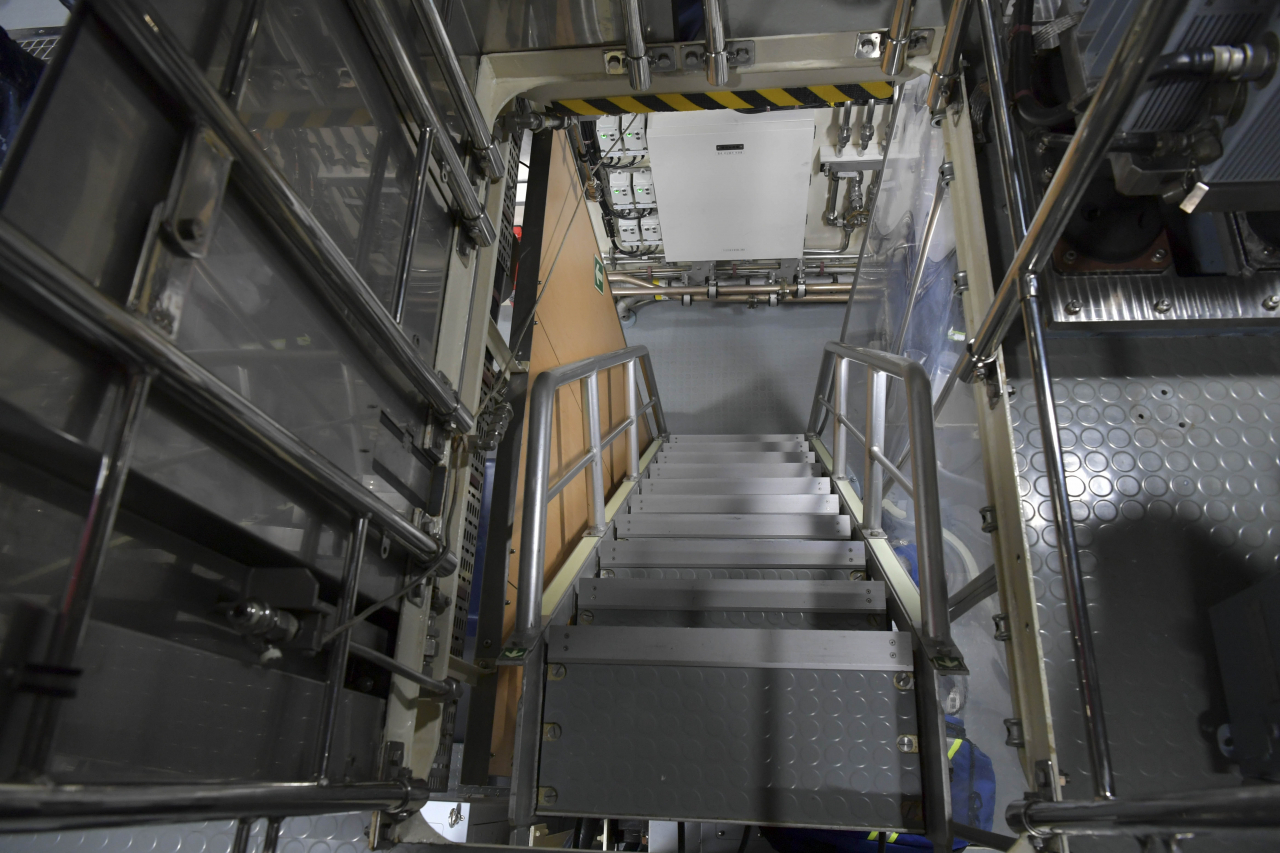
The structure of the Dosan Ahn Changho submarine, which was open to journalists on Wednesday, was indeed unique.
Even climbing the ladder to enter the submarine proved to be a challenging task.
Once inside, the submarine has two levels, with a total of 50 beds each 190 centimeters long. Most of them are three-level bunk beds which appeared quite uncomfortable, especially those on the very bottom.
Adjacent to the armament storage area, there was another sleeping area, the proximity. Another armament storage room is located near the area where 20 of the submariners eat.
Within the confines of the submarine, a multitude of valves, buttons, machinery, torpedoes, missiles are all packed together. This environment highlights the intricate and interconnected nature of the submarine operations, where every component and individual plays a vital role despite the limited space available.
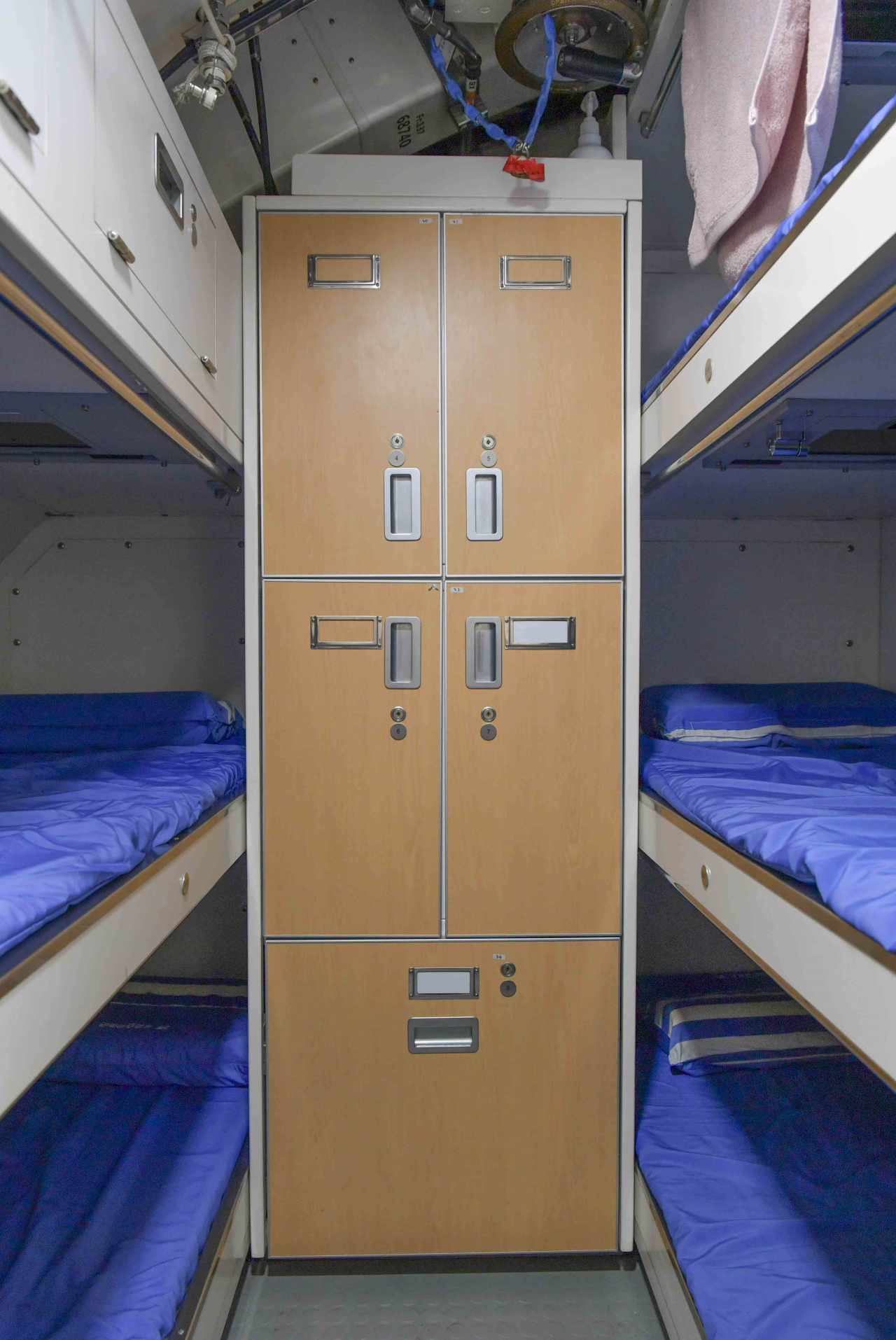
Military officials at the Submarine Force Command stressed the high complexity and sensitivity of submarines. They emphasized that the slightest mistake -- such as pressing the wrong button or mishandling one valve -- could have dangerous consequences, including the risk of submersion or sinking of the submarine itself.
Comprehensive and intensive training, therefore, are essential to ensure the safety and effectiveness of submarine operations.
“The best submarines are those that undergo the most training exercises,” one of the slogans displayed at the training center read. “Those who survive here will only survive in combat.”
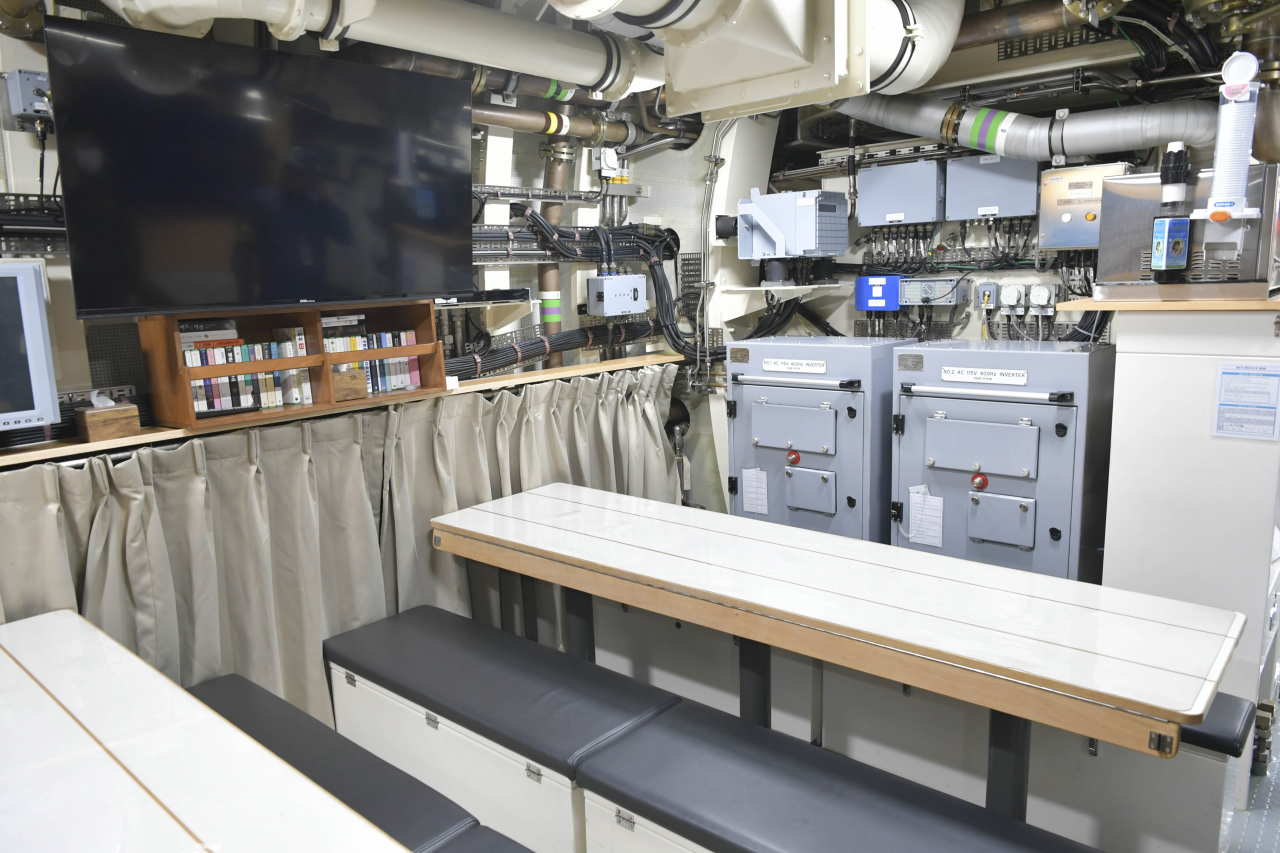
Another military official emphasized the importance of connecting submarines with crew members while introducing a training center with facilities that replicate the actual environment of the submarine.
After undergoing a basic course that typically lasts from one to 1 1/2 years, individuals can become Navy submariners only after obtaining qualification through the Submarine Qualification System.
But this is not the end -- individuals are required to undergo customized training tailored to the specific submarine they will serve on. This training continues on a yearly basis to ensure that submariners remain proficient in their duties and are familiar with the unique systems and operations of their assigned submarine.
“Submarine units operate under the principle that peacetime is equivalent to wartime. The missions and operations we undertake remain unchanged, whether it is during peacetime or in times of conflict,” Rear Adm. Lee Su-youl, commander of the South Korean Navy’s Submarine Force Command said Wednesday at a naval base in Changwon’s Jinhae district, South Gyeongsang Province.
“We consider peacetime as if it were wartime, consistently conducting training exercises, maintaining readiness, and staying prepared.”



















![[Today’s K-pop] BTS pop-up event to come to Seoul](http://res.heraldm.com/phpwas/restmb_idxmake.php?idx=642&simg=/content/image/2024/04/17/20240417050734_0.jpg&u=)